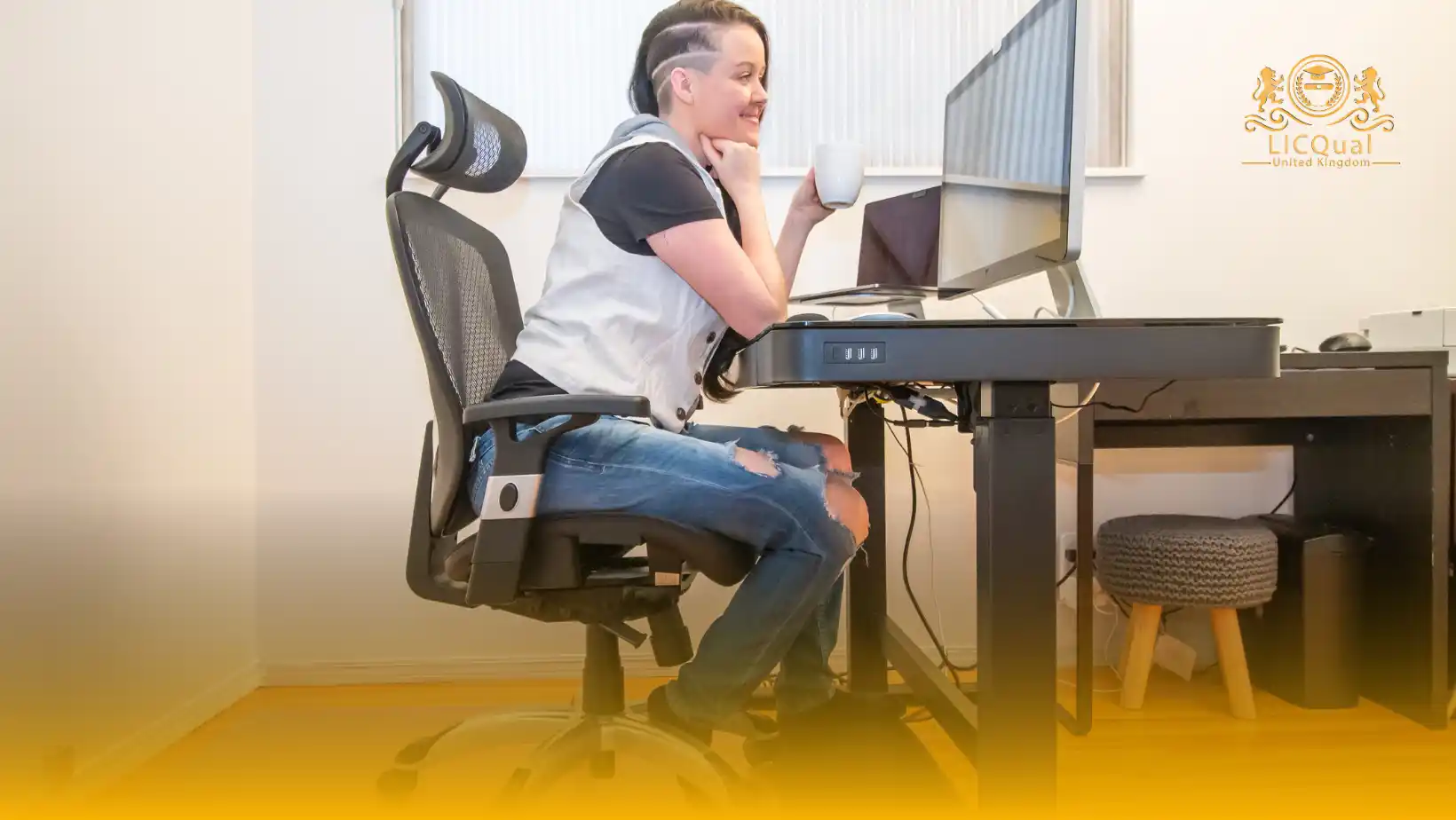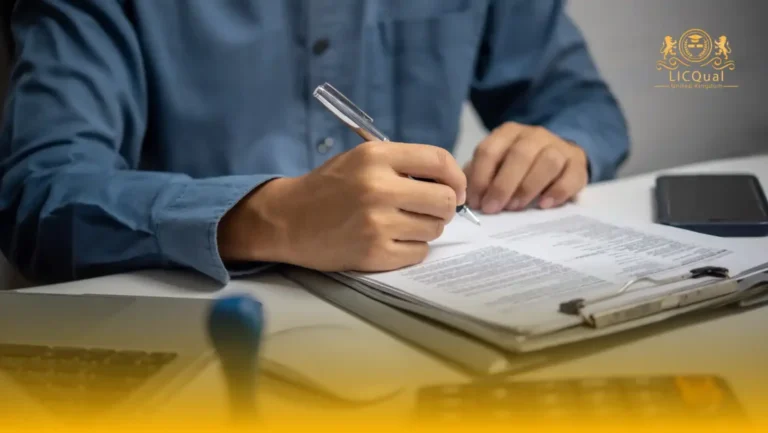The LICQual Level 3 Diploma in Dental Ergonomics is a specialized qualification designed for dental professionals and healthcare practitioners who wish to enhance their understanding of ergonomics in dental practice. This course is not intended for fresh candidates; it is specifically tailored for experienced learners seeking to improve their clinical performance, reduce occupational risks, and advance their careers while expanding their professional knowledge.
Learners will explore the principles of dental ergonomics, including posture optimisation, workstation design, instrument handling, and the prevention of musculoskeletal disorders. The course also covers risk assessment, safe clinical practice, and strategies to improve efficiency and comfort in daily dental procedures. By mastering these concepts, learners will be better equipped to enhance patient care, protect their own health, and promote long-term career sustainability in the dental field.
Centres delivering this diploma are required to meet high standards to ensure effective learner development. They must have competent and qualified staff, access to appropriate clinical resources, and all necessary materials to support both theoretical and practical learning. This ensures that every learner benefits from a structured, safe, and professional training environment, allowing them to apply ergonomic principles confidently in their clinical practice.
With its focus on professional growth, occupational health, and practical application, the LICQual Level 3 Diploma in Dental Ergonomics is ideal for dental practitioners and healthcare professionals who are committed to continuous improvement, enhanced patient care, and ongoing Continuing Professional Development (CPD) within the dental profession.
Course Overview
Qualification Title
LICQual Level 3 Diploma in Dental Ergonomics
Total Units
6
Total Credits
60
GLH
240
Qualification #
LICQ2200670
Qualification Specification
To enroll in the LICQual Level 3 Diploma in Dental Ergonomics, applicants must meet the following criteria:
|
Qualification# |
Unit Title |
Credits |
GLH |
|---|---|---|---|
|
LICQ2200670-1 |
Principles of Dental Ergonomics |
10 |
40 |
|
LICQ2200670-2 |
Musculoskeletal Health and Risk Assessment |
10 |
40 |
|
LICQ2200670-3 |
Workstation and Instrument Optimization |
10 |
40 |
|
LICQ2200670-4 |
Patient Positioning and Clinical Techniques |
10 |
40 |
|
LICQ2200670-5 |
Occupational Safety and Infection Control |
10 |
40 |
|
LICQ2200670-6 |
Professional Development and Reflective Practice |
10 |
40 |
By the end of this course, learners will be able to:
Unit 1: Principles of Dental Ergonomics
- Explain the fundamental principles of ergonomics in dental practice.
- Identify posture and movement strategies to reduce physical strain.
- Apply ergonomic principles to improve efficiency and long-term occupational health.
Unit 2: Musculoskeletal Health and Risk Assessment
- Recognise common musculoskeletal disorders affecting dental professionals.
- Conduct risk assessments to identify potential ergonomic hazards.
- Implement strategies to prevent injury and maintain musculoskeletal health.
Unit 3: Workstation and Instrument Optimisation
- Design and organise dental workstations for optimal ergonomic use.
- Select and position instruments to enhance comfort and workflow.
- Evaluate the effectiveness of workstation arrangements and make improvements.
Unit 4: Patient Positioning and Clinical Techniques
- Apply correct patient positioning techniques to reduce practitioner strain.
- Utilise appropriate seating and instrument handling methods in clinical practice.
- Optimise clinical techniques to improve both practitioner comfort and patient care.
Unit 5: Occupational Safety and Infection Control
- Adhere to safe practice protocols, including infection control standards.
- Use personal protective equipment (PPE) effectively during clinical procedures.
- Maintain a safe and hygienic clinical environment to protect learners and patients.
Unit 6: Professional Development and Reflective Practice
- Apply reflective practice to enhance ergonomic skills and clinical performance.
- Commit to ongoing Continuing Professional Development (CPD) in dental ergonomics.
- Demonstrate professional growth and maintain high standards of practice.
The LICQual Level 3 Diploma in Dental Ergonomics is designed for dentists, dental specialists, and oral healthcare professionals who want to improve clinical efficiency, posture, and workplace safety. This course is ideal for those seeking specialization in dental ergonomics, evidence-based workflow management, and long-term professional health. Whether you are a practicing dentist, a dental hygienist, or a recent graduate, this diploma equips you with the skills to enhance patient care while reducing musculoskeletal strain.
1. Practicing Dentists Seeking Ergonomic Specialization
- Designed for licensed dentists aiming to improve workflow efficiency.
- Provides training in posture optimization and patient positioning.
- Enhances skills to reduce work-related musculoskeletal disorders.
- Strengthens clinical efficiency and procedural comfort.
- Offers internationally recognized credentials to boost career opportunities.
2. Dental Specialists
- Ideal for orthodontists, prosthodontists, and restorative dentists.
- Focuses on integrating ergonomic principles into specialized practice.
- Builds expertise in safe positioning for complex procedures.
- Enhances precision and efficiency in clinical interventions.
- Prepares specialists to implement ergonomic strategies in multidisciplinary care.
3. Early-Career Dental Graduates
- Suitable for recent BDS, DDS, or equivalent graduates seeking ergonomic training.
- Provides foundational knowledge in workplace safety and ergonomics.
- Prepares learners for advanced clinical roles and efficient workflow management.
- Encourages evidence-based posture and practice strategies.
- Increases employability in modern, ergonomically-conscious dental practices.
4. International Dental Professionals
- Tailored for practitioners seeking UK-accredited Dental Ergonomics qualifications.
- Offers flexible online learning accessible worldwide.
- Aligns with international standards in ergonomic dental practice.
- Enhances global recognition and professional mobility.
- Provides practical guidance for modern clinical efficiency techniques.
5. Dental Educators and Academic Professionals
- Designed for lecturers and trainers updating curriculum on dental ergonomics.
- Incorporates evidence-based techniques for teaching workplace safety.
- Supports academic leadership and ergonomic research in dentistry.
- Enhances credibility as an expert in modern clinical practice efficiency.
- Provides opportunities for case studies and clinical research contributions.
6. Clinic Owners and Practice Managers
- Helps dental practice owners improve staff efficiency and safety.
- Provides strategies to implement ergonomic workflow and equipment setup.
- Strengthens team supervision and productivity management.
- Enhances patient satisfaction through streamlined procedures.
- Promotes practice growth by offering safer, modern dental care services.
7. Career-Oriented Dental Professionals Seeking Recognition
- Ideal for professionals aiming for internationally recognized Dental Ergonomics credentials.
- Enhances clinical expertise and professional credibility in workplace safety.
- Opens pathways to advanced clinical, consultancy, or academic roles.
- Provides a career-boosting foundation in dental ergonomics and efficiency.
- Equips professionals to excel in multidisciplinary dental and medical environments.
To deliver the LICQual Level 3 Diploma in Dental Ergonomics effectively and ensure high-quality learner outcomes, centres must meet the following requirements:
- Qualified and Competent Staff: Centres must employ experienced and certified dental or healthcare professionals with expertise in dental ergonomics to deliver both theoretical and practical training.
- Clinical Facilities and Resources: Adequate clinical facilities, including workstations, dental chairs, ergonomic equipment, and instruments, must be available to support hands-on learning.
- Access to Learning Materials: Centres should provide learners with comprehensive study resources, including textbooks, research materials, and digital learning tools relevant to dental ergonomics.
- Safety and Infection Control Standards: Centres must follow current clinical safety protocols and infection control measures to provide a safe and hygienic learning environment.
- Assessment and Evaluation Tools: Appropriate facilities and tools for practical assessments, observations, and reflective practice must be in place.
- Support for CPD and Professional Development: Centres should facilitate ongoing learner development through guidance, mentoring, and opportunities for Continuing Professional Development (CPD).
- Learner Support Services: Centres must provide structured learner support, including supervision, guidance on assessments, and access to expert advice for practical training.
Meeting these requirements ensures learners receive a professional, safe, and comprehensive learning experience, equipping them with the skills, knowledge, and confidence to implement ergonomic principles effectively in clinical dental practice.
Assessment and Verification
All units within this qualification are subject to internal assessment by the approved centre and external verification by LICQual. The qualification follows a criterion-referenced assessment approach, ensuring that learners meet all specified learning outcomes.
To achieve a ‘Pass’ in any unit, learners must provide valid, sufficient, and authentic evidence demonstrating their attainment of all learning outcomes and compliance with the prescribed assessment criteria. The Assessor is responsible for evaluating the evidence and determining whether the learner has successfully met the required standards.
Assessors must maintain a clear and comprehensive audit trail, documenting the basis for their assessment decisions to ensure transparency, consistency, and compliance with quality assurance requirements.







